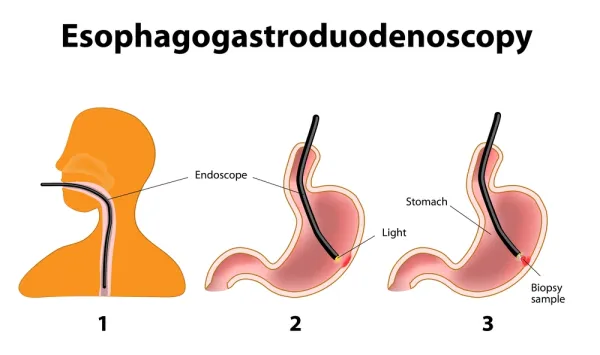Pick Up an Ethical $400 By Applying the Lessons from This EGD Op Note

Tip: “Sample collection” is different from an actual biopsy.
When your gastroenterologist ventures into a patient’s stomach, say when treating gastroesophageal reflux disease (GERD), chances are she would opt to evaluate the surface of the lower or distal esophagus. This service is known as esophagogastroduodenoscopy (EGD), and mainly involves imaging the upper GI tract consisting of the esophagus, stomach, and first part of the small intestine also known as the duodenum.
Keep your hopes high for a potential $400 payment by easily navigating through the ins and outs of EGD coding. How? Check out this op note, where a gastroenterologist performed a conventional EGD with sedation, and find out.
Op note: Informed consent was obtained. The patient was carefully premedicated with a total of 5 mg of Versed intravenously given in careful titration prior to and during the procedure.
The adult fiberoptic gastroscope was passed into the esophagus under direct vision without complications. All areas were carefully examined. The esophagus appeared normal. The GE junction was at approximately 40 cm. There was no endoscopic evidence of Barrett’s esophagus. Multiple 4-quadrant biopsies were obtained. The stomach was examined next. There were superficial ulcerations of the antrum consistent with NSAID ulcerations. Multiple biopsies were obtained. The body of the stomach was normal and retroflexion showed a normal cardia and fundus. Biopsies of the antrum and body of the stomach were obtained for CLO test to assess for H. pylori. The duodenal bulb was normal and the second portion of the duodenum was also normal. The patient tolerated the procedure well without complications.
Remember The ‘Big 3’
First, when coding an upper GI endoscopy, make sure you consider these three factors:
1. How far your gastroenterologist went with the scope (e.g., to the esophagus, stomach, or duodenum);
2. If the physician performed any biopsies or polyp removal, and what technique is used (i.e., cold biopsy, hot biopsy, or snare)
3. The type of dilator used by your physician (if she performed dilation at all).
In this case, the op note clearly states that she examined the patient for signs of Barrett’s esophagus (K22.70 or K22.71-, Barrett’s esophagus…), and took biopsies; examined the stomach, and took biopsies; before she finally examined the duodenum. Thus, you should report the procedure with 43239 ( Esophagogastroduodenoscopy, flexible, transoral; with biopsy, single or multiple). If the physician only examined the esophagus, you would choose from the esophagus endoscopy code set 43200-43234.
Profit: If the procedure was performed in the office, you should expect to collect $403.87 as national rate for your claim using 43239 (11.28 RVUs multiplied by the 2016 conversion factor of 35.8043).
Report the primary diagnosis with K25.9 (Gastric ulcer unspecified as acute or chronic without hemorrhage or perforation). If you know from the history what medicine the patient used prior to the procedure, you may add Z79.1 (Long-term [current] use of nonsteroidal anti-inflammatories [NSAID]) as secondary diagnosis.
Never Disregard Biopsy, Polyp Treatment During EGD
It’s important that you are aware of what your gastroenterologist did while performing the EGD on the patient. With biopsies, for instance, keep in mind that no matter how many biopsies a physician takes during the endoscopy, you can only code one procedure (43239 in this case). However, an exception allows you to bill 43238 (Esophagogastroduodenoscopy, flexible, transoral; with transendoscopic ultrasound-guided intramural or transmural fine needle aspiration/biopsy[s], [includes endoscopic ultrasound examination limited to the esophagus, stomach or duodenum, and adjacent structures]) if the physician also performed biopsies using ultrasound guided aspiration on a separate anatomical site.
Careful: Don’t mistake collection of samples from performing a biopsy. Physicians usually collect samples of fluid or superficial tissue cells (or cytology brushings) during an EGD. This service is included in the base procedure 43235 (Esophagogastroduodenoscopy, flexible, transoral; diagnostic, including collection of specimen[s] by brushing or washing, when performed [separate procedure]). On the other hand, physicians would perform an EGD with biopsy (taking small pieces of tissue) of any abnormality directly through the endoscope of suspected Barrett’s esophagus or duodenal and stomach ulcers.
Sometimes the physician would treat polyps or other lesions during an EGD. You have three CPT®s to choose from for lesion removals:
You can only code one EGD with lesion removal. However, if the physician treats different lesions with different procedures, you could append modifier 59 (Distinct procedural service) to the procedure of lesser value to break the bundle.




